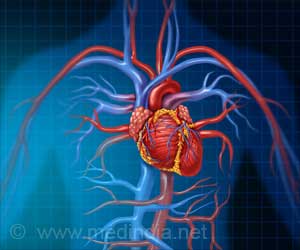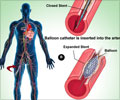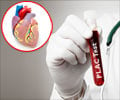A microscale model can reproduce essential components of a myocardial infarction and could one day serve as a testbed for novel tailored cardiac medications.
- A revolutionary device might eventually serve as a tes-tbed for the development of novel heart treatments and even personalized therapies
- This device simulates some key aspects of a heart attack in a relatively simple and user-friendly system
McCain, a ‘cardiac tissue engineer’ whose previous work included co-developing a heart on a chip, and Rexius-Hall describe their findings in the journal Science Advances in a paper titled ‘A Myocardial Infarct Border-Zone-On-A-Chip Demonstrates Distinct Regulation of Cardiac Tissue Function by an Oxygen Gradient’.
Leading Cause of Death in America
Coronary heart disease is the leading cause of death in the United States. According to the American Heart Association (AHA), 360,900 Americans died from heart disease in 2018, accounting for 12.6% of all fatalities in the United States. Severe coronary heart disease can result in a heart attack, which accounts for a large portion of the pain and suffering. A heart attack occurs when fat, cholesterol and other substances in the coronary arteries significantly limit the flow of oxygen-rich blood to a portion of the heart. Between 2005 and 2014, an average of 805,000 Americans died from heart disease per year.Even if a patient survives a heart attack, they may become progressively exhausted, enervated, and unwell over time; some may even die because of heart failure. This is because heart cells do not renew like other muscle cells. Instead, immune cells, some of which can be dangerous, appear at the site of injury. Scarring also develops, weakening the heart and reducing the amount of blood it can pump.
However, scientists do not fully comprehend this mechanism, particularly how cardiac cells in healthy and wounded areas of the heart communicate with one another and how and why they change following a heart attack.
“Fundamentally, we want to have a model that can lead to a better understanding of heart attack injury,” Rexius-Hall said.
Novel Chip for Deciphering Heart Attack
The heart attack on a chip is designed from the ground up. At the bottom is a 22-millimeter-by-22-millimeter-square micro-fluidic device constructed of PDMS, a rubber-like polymer, with two channels on opposing sides through which gases flow. Above that is a very thin layer of the same oxygen-permeable rubber substance. “The top of the chip is then structured with a micro layer of protein so that the heart cells align and produce the same architecture that we have in our hearts,” McCain explained. Finally, rodent heart cells are cultured on top of the protein.“To mimic a heart attack, gas with oxygen and gas without oxygen is released through each channel of the microfluidic device, exposing our heart on a chip to an oxygen gradient, similar to what really happens in a heart attack,” McCain said.
McCain added that because the microfluidic device is small, clear, and easy to see under a microscope, it also allows researchers to observe in real-time functional changes that sometimes occur in the heart after an attack, such as arrhythmia, or irregular heartbeat, and contractile dysfunction, or decreases in heart contraction strength. In the future, researchers can add immune cells or fibroblasts, the cells that form the scar following a heart attack, to make the model more sophisticated.
Animal models, on the other hand, do not allow researchers to observe changes in heart tissue in real-time. Furthermore, typical cell culture methods expose cardiac cells evenly to high, medium, or low levels of oxygen, but not in a gradient. That means they cannot replicate what happens to injured heart cells in the so-called border zone after a heart attack, according to Rexius-Hall.
McCain continued, “It’s very exciting and rewarding to think about our gadget having a beneficial impact on patient lives shortly, particularly for heart attacks, which are highly common.”
Source-Medindia
















